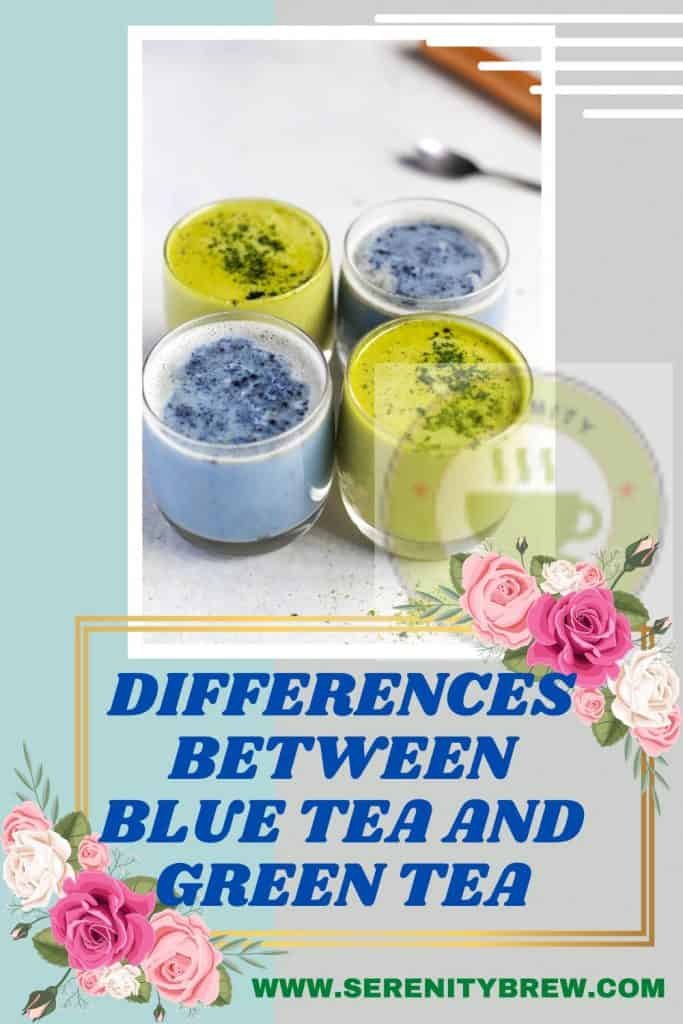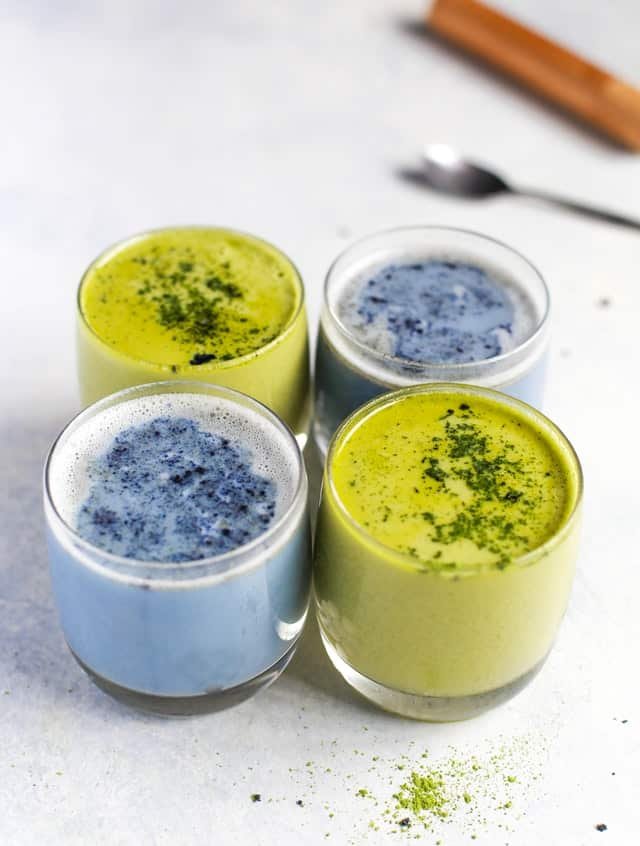
Blue tea is a tea that causes confusion. It is mainly produced in China, where it is very popular and appreciated, and its production method includes an oxidation phase that varies in intensity.
This means that within the group of blue teas, there is a wide variety of flavors. Sometimes oolong is close to what we would expect from a black tea, other times it is difficult to differentiate it from a green tea.
Thus, a blue tea can be floral or fruity, intense or subtle, sweet, roasted or woody. In this article, we compare green tea and blue tea and see what brings these two types of tea together and what separates them.
What is blue tea or oolong tea?
Oolong tea is made, like other varieties, from the leaves of the Camellia sinensis. It is considered a partially oxidized tea, since during its preparation, the leaves go through an oxidation process.
This modifies its aroma and flavors and, depending on its duration, brings oolong tea closer to the range of flavors of black teas (high oxidation) or green teas (low oxidation).
Differences in taste: blue tea and green tea
Although it is known as blue tea, the color in the cup of oolong ranges from yellowish to greenish and, what is most striking, is that the flavor can vary greatly from one tea to another.
The aromas of oolong tea can be fruity or remind us of nuts or even wood. An oolong can be light years ahead of another tea in the same category.
For its part, the flavor of green tea, due to its low oxidation, is often described as vegetable. Its astringency is usually higher and it has that bitter undertone that makes it refreshing and invigorating.
Differences in the production of blue tea and green tea
Although both oolong tea and green tea are made from the leaves of the same plant, the oxidation process they undergo affects their flavor and aroma.
In the case of green tea, after the collection of leaves, a brief oxidation process begins. This is much shorter than in the case of black teas. To stop it, the leaves are slightly “cooked”. The Chinese usually use frying pans or woks , the Japanese use steam. After this, the leaves go through a series of mechanical processes and are rolled to acquire the appearance that we all know.
For oolong teas, the process works a little differently. These teas are distinguished by belonging to the group of semi-oxidized teas and, therefore, are halfway between a black tea and a green tea.
Immediately after the harvest, the process of making the oolong begins. To begin with, the leaves are withered in the sun, then shaken inside bamboo baskets to break them slightly. Later, they are put back in the sun to oxidize until they turn a yellowish color with reddish edges.
Subsequently, two methods are used to finish its production: the oldest involves rolling the leaves in a curved way, while the second presses them into balls.
In some cases in China, oolong tea leaves are also lightly roasted. While in Taiwan, another of the producing countries, the oxidation process is longer, thus obtaining a variety more similar to black tea than in the case of Chinese oolong.
Does blue tea or green tea have more caffeine?
It is not easy to determine the caffeine content of teas, since there are many variables that can affect them: it can vary from one production to another, from one brand to another…
In fact, a study noted that there is a wide variation in caffeine concentration from one tea to another, even when they belong to the same class.
Overall, oolong tea is estimated to have 16 milligrams of caffeine per 100 grams, while green tea provides about 20 milligrams per 100 grams. As you can see, the difference between the two, at least in this aspect, is minimal.
Remember that caffeine is a stimulant but that tea, unlike coffee, also provides l-theanine, an amino acid that helps generate a feeling of relaxation and well-being. The combination of both substances would help maintain attention in a calm way.
Differences in the preparation of blue tea
Green tea, due to its low oxidation, is extremely sensitive to temperature, which is why you should pay special attention to it.
An excessive temperature will cause excessive tannins to be released, making it bitter and you will have spoiled a good cup of tea. For this reason, it is recommended to heat the water between 70 and 80ºC, but be careful: if the water is too cold, the flavors of the tea will not develop correctly.
On the other hand, for oolong tea you need the water a little hotter but without boiling, between 90 and 100ºC would be ideal.
Different properties for health

The slimming properties of tea
Tea consumption has become popular in recent times for being a tasty and healthy drink with which to complement diets to lose weight.
The subject is still a subject of study and there is no consensus in the scientific community. One of the factors studied and related to the slimming properties of tea, especially green tea, is its high content of catechins. These substances, in combination with caffeine, would help burn fat. A good example is a study from Taiwan, which found that regular green tea drinkers reported lower body fat.
Blue tea, meanwhile, has also been used for many years for the same purpose by traditional Chinese medicine. Various studies have concluded that regular consumption of oolong would help speed up metabolism, thanks to its polyphenols.
Unfortunately, to date, there is no research comparing the two teas to determine which would have the greater slimming effect.
The power of antioxidants in tea
Tea, in all its varieties, is a good source of antioxidants. These molecules fight against harmful free radicals, preventing the development of degenerative and cardiovascular diseases and even cancer. In addition, these compounds help prevent premature aging.
In particular, a study showed that green tea reduces levels of LDL cholesterol (“bad” cholesterol) in the blood, one of the main risk markers for cardiovascular diseases. Both green tea and oolong would reduce the risk of mortality from these diseases.
Various studies have suggested that both green and oolong teas have antidiabetic properties that may help improve blood sugar levels. If we refer to cancer, the data is not conclusive, although it is believed that the antioxidants in both green and blue teas would help prevent the growth of tumor cells.
In short, green and blue tea share health benefits, since they share the same raw material, our well-known Camellia sinensis, the tea tree. Regarding the taste, sometimes it will be difficult for you to differentiate an oolong from a green tea, but hey, the truth is that it can be a challenge even for accustomed palates.
Close your eyes, enjoy your cup and identify the nuances of each sip.
